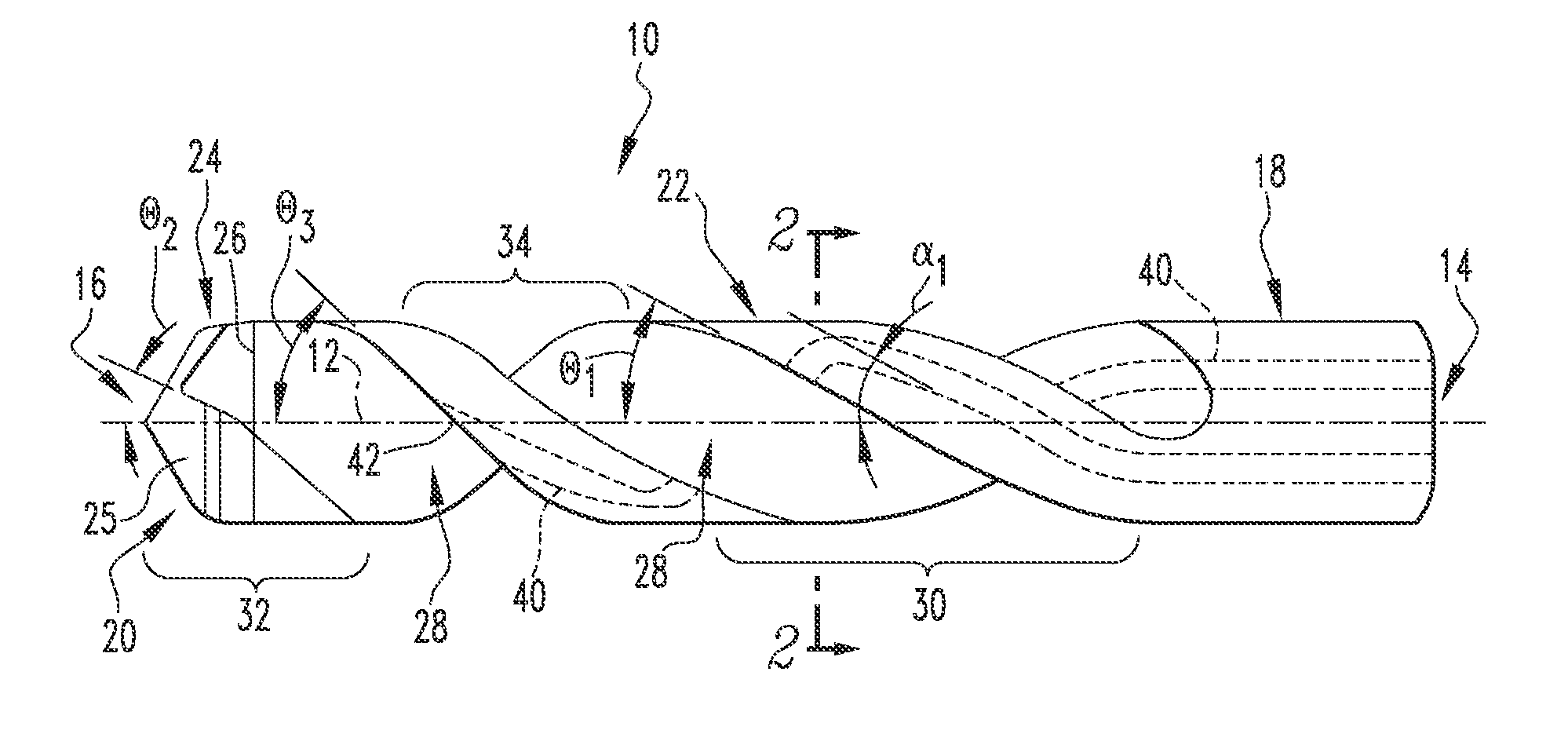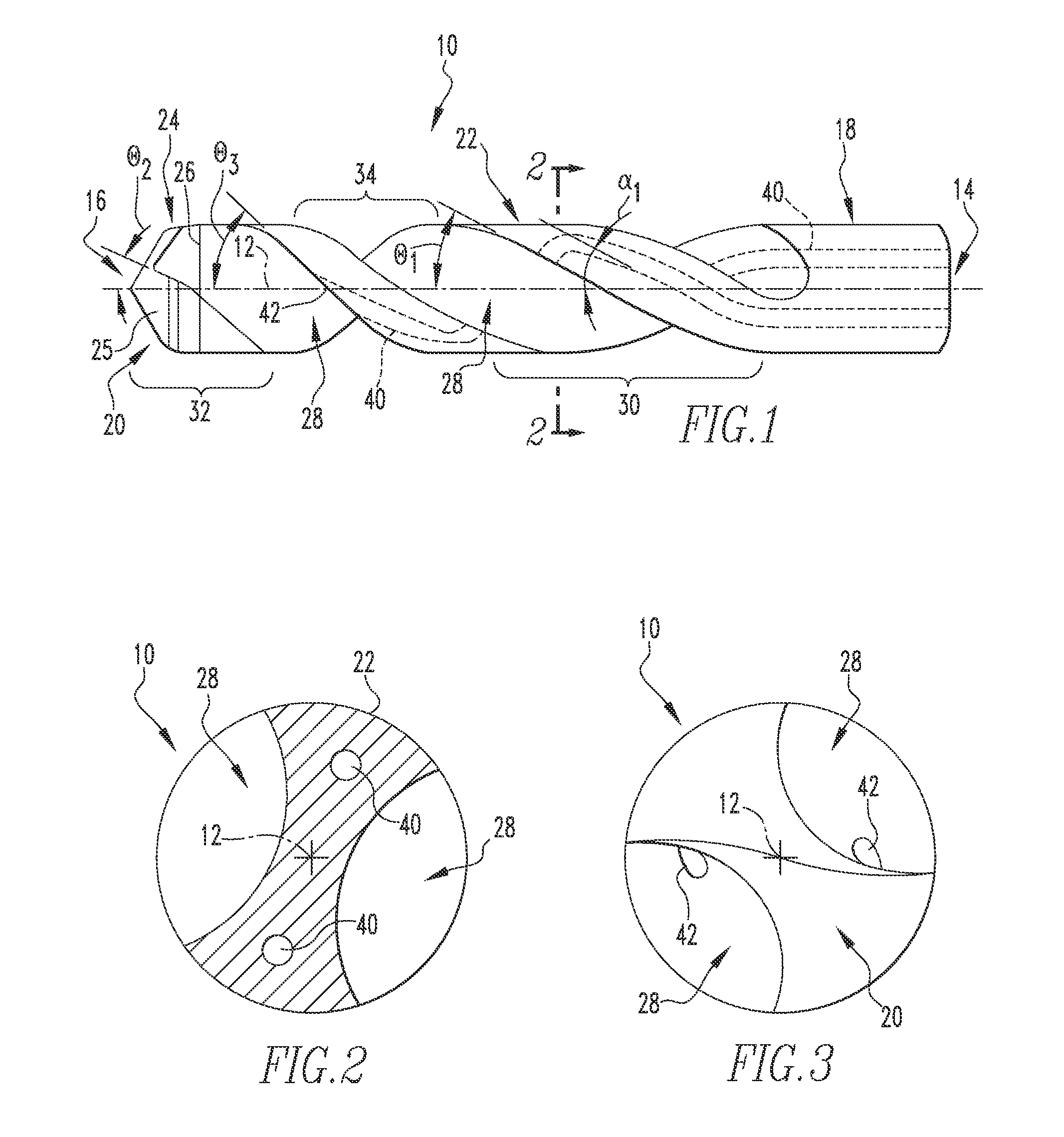Rotary cutting tool having PCD cutting tip
a cutting tip and rotary cutting technology, applied in the field of cutting tools, can solve the problems of reducing strength, difficulty in cutting through-coolant holes in the flank of drills, and high cost of edm process, and achieve the effect of improving the design of coolant holes
- Summary
- Abstract
- Description
- Claims
- Application Information
AI Technical Summary
Benefits of technology
Problems solved by technology
Method used
Image
Examples
Embodiment Construction
[0020]Directional phrases used herein, such as, for example, left, right, front, back, top, bottom and derivatives thereof, relate to the orientation of the elements shown in the drawings and are not limiting upon the claims unless expressly recited therein. Identical parts are provided with the same reference number in all drawings.
[0021]As used herein, the term “number” shall be used to refer to any non-zero quantity (i.e., one or any quantity greater than one).
[0022]As used herein, the term “about” shall be used to refer to a point near, or at, a particular identified point (i.e., proximate).
[0023]FIGS. 1-3 depict an example cutting tool 10, in accordance with a non-limiting embodiment of the present invention, for conducting cutting operations on a workpiece (not shown) when cutting tool 10 is rotated about a central longitudinal axis 12. Although depicted as a drill in the exemplary embodiment described herein, it is to be appreciated that concepts described herein are applicab...
PUM
| Property | Measurement | Unit |
|---|---|---|
| angle | aaaaa | aaaaa |
| helix angle | aaaaa | aaaaa |
| helix angle | aaaaa | aaaaa |
Abstract
Description
Claims
Application Information
 Login to View More
Login to View More - R&D
- Intellectual Property
- Life Sciences
- Materials
- Tech Scout
- Unparalleled Data Quality
- Higher Quality Content
- 60% Fewer Hallucinations
Browse by: Latest US Patents, China's latest patents, Technical Efficacy Thesaurus, Application Domain, Technology Topic, Popular Technical Reports.
© 2025 PatSnap. All rights reserved.Legal|Privacy policy|Modern Slavery Act Transparency Statement|Sitemap|About US| Contact US: help@patsnap.com


